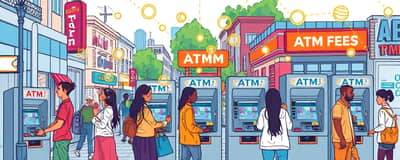In today’s fast-paced financial landscape, many consumers weigh the convenience of automatic bill pay against potential hidden dangers. With nearly half of American households embracing autopay for recurring monthly expenses, it is clear that the appeal of hands-off payment management resonates with busy individuals. Yet a large portion of the population still favors manual transactions, driven by the desire for greater control and visibility. This article explores the adoption trends, advantages, pitfalls, and innovative solutions that define the autopay debate.
Rising popularity meets cautious skepticism
Automatic bill pay has steadily gained traction over the past decade. According to recent studies, approximately 41% of consumers in the United States have enabled autopay for at least some of their regular bills. Such adoption varies by age and income, revealing distinct behavior patterns across demographic groups.
- 48.2% of consumers earning over $100,000 per year use autopay.
- 42.2% of those making $50,000–$100,000 annually rely on automated payments.
- Only 31% of individuals earning under $50,000 use autopay services.
Baby Boomers lead the way with a 43% usage rate, while Generation Z records the lowest adoption at 34.6%. Millennials and Gen Z are nevertheless the most active among younger cohorts in setting up easy payment solutions. This demographic landscape highlights how financial comfort and technological familiarity shape consumer choices.
Advantages of embracing automatic bill pay
- Time savings and reduced mental load by eliminating manual processing.
- on-time payment and boosted credit through reliable deductions.
- Lower risk of late fees and penalties when due dates are met automatically.
- Streamlined financial organization via consolidated payment records.
For busy professionals and families alike, setting up autopay can feel like unlocking a new level of financial freedom. Automated payments ensure that mortgage, utilities, subscriptions, and credit card bills are settled promptly each month, removing the need for constant due date tracking. Users often report a sense of relief knowing that critical expenses are handled seamlessly in the background, freeing cognitive resources for other priorities.
This correlation between income and autopay usage suggests that higher earners may feel more confident maintaining sufficient account balances and managing any unexpected fluctuations. It also points toward an opportunity for fintech platforms to develop more inclusive tools tailored to consumers with tighter budgets.
Navigating the potential pitfalls
Despite its advantages, autopay carries inherent financial risks that warrant careful consideration. When funds are insufficient to cover scheduled withdrawals, consumers can face steep overdraft and penalty fees, returned payments, and damage to credit standing. More subtly, automatic setups can mask subtle billing errors, subscription renewals for services no longer used, or fraudulent charges.
- Overdraft and insufficient funds fees accumulating rapidly.
- Failure to detect billing errors or unauthorized charges.
- Continued payment for unused or unwanted services.
- Potential legal and collection costs in extreme cases.
Staying engaged with one’s bank statements and billing cycles remains essential. Regularly reviewing account alerts and setting up low-balance notifications can help mitigate these dangers. Financial institutions that offer real-time transaction monitoring and alerts often see more satisfied customers with fewer disputes.
Why many consumers stick to manual payments
For 64% of Americans, maintaining precise control over personal finances is paramount. Manual bill payment allows individuals to allocate funds deliberately, ensuring they have sufficient cash to cover priorities before releasing money to service providers. It also provides an opportunity to review each statement for accuracy, dispute any questionable charges, and negotiate better rates.
Manual payers often cite the following reasons:
- Confidence in account balances at the moment of payment.
- Enhanced oversight to detect billing discrepancies.
- Flexibility to delay or split payments in times of tight cash flow.
In an era when two-thirds of U.S. households live paycheck to paycheck, this level of vigilance can make the difference between financial stability and unexpected shortfalls. For these consumers, the extra effort of writing checks or clicking through individual bills each month is a small price to pay for the reassurance it brings.
Emerging trends in digital payments
While autopay and manual payments dominate bill settlement options, new technologies are reshaping the landscape. Digital wallets like Apple Pay, PayPal, and Venmo now account for 34% of all automated bill transactions, providing alternative pathways for recurring expenses. Moreover, the “Buy Now, Pay Later” movement continues to expand, allowing consumers to split large purchases into manageable installments, often without fees.
On average, U.S. consumers conduct 48 bill payments per month, with remote and digital methods steadily increasing. Bundled subscriptions also see rising popularity, as 61% of customers express willingness to pay slightly more for consolidated service packages that include mobile, internet, and streaming content. These trends underscore a broader shift toward seamless, all-in-one financial experiences.
Innovations for safer and smarter autopay
To close the gap between convenience and caution, financial institutions and fintech startups are developing smarter autopay solutions. Features such as personalized spending insights, low-balance warnings, and interactive dashboards aim to keep users informed without overwhelming them. By delivering clear, actionable financial insights, these tools help build trust and promote responsible automated payments.
Some of the most promising innovations include:
- AI-driven alerts that flag unusual billing patterns.
- Customizable thresholds to pause or delay automated transfers.
- Integrated budgeting modules tied directly to autopay schedules.
By combining automation with robust oversight features, these emerging platforms strive to offer the best of both worlds: effortless, fully automated payment management coupled with proactivity and transparency.
Conclusion: finding the right balance
Automatic bill pay can be a powerful ally in achieving financial peace of mind and reducing the mental burden of household administration. However, it is not a one-size-fits-all solution. Consumers must weigh the benefits of streamlined, predictable recurring payments against the risks of overdrafts, hidden fees, and overlooked billing issues.
Whether you choose to automate every monthly bill or prefer to maintain strict manual control, the key lies in staying informed. Leverage account alerts, regularly review statements, and select financial tools that align with your personal comfort level and cash flow dynamics. By doing so, you can harness the efficiency of autopay without surrendering the oversight necessary for sound money management.














